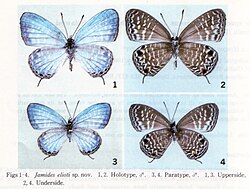Type specimen

In biology, a type specimen is a particular specimen to which a scientific name is formally attached. For this purpose a specimen is something that can be kept, unchanging, for a long time (for centuries). A specimen may be an organism, a part of an organism, or many small organisms together.
Preferably a type specimen should be kept where researchers may have a chance to study it. Often, type specimens are kept in museums and the like. A type specimen need not be typical, that is, it need not be representative.
A type specimen can be assigned when a name is first published, or it can be assigned later. Besides type specimens there are other form of types.
One particular type specimen may have any number of scientific names attached to it. For example the names Fabaceae (family), Faboideae (subfamily), and Faba (genus) all have the same specimen as the type. For any one circumscription,[clarification needed] position, and rank of a taxon only one name can be correct (for a genus that includes the type specimens of the names Vicia and Faba, both, the correct name will be Vicia).
A type specimen is only one of several possible kinds of type. For example, the type of the name of a genus of animals is a type species. But the type specimen is the most famous kind of type.
Type Specimen Media
Carl Linnaeus's remains constitute the type specimen for Homo sapiens.
A gossamer-winged butterfly, Jamides elioti:1) dorsal and 2) ventral aspect of holotype,3) dorsal and 4) ventral aspect of paratype
Type illustration of Mormopterus acetabulosus
The common toad, Bufo bufo described by Linnaeus, is the type species for the genus Bufo




